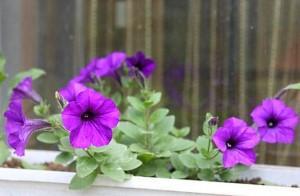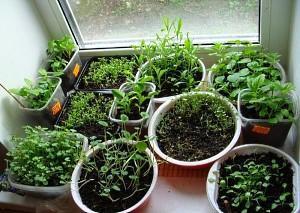Petunia Alderman - features of growing
 Petunia is a flower that grows in flower beds, in personal plots, on balconies, in gazebos, or just in rooms. The culture is popular with amateur flower growers. It has many varieties and types of various shades and shapes. Recently, petunia Alderman has appeared on the market, which quickly won the love of flower growers.
Petunia is a flower that grows in flower beds, in personal plots, on balconies, in gazebos, or just in rooms. The culture is popular with amateur flower growers. It has many varieties and types of various shades and shapes. Recently, petunia Alderman has appeared on the market, which quickly won the love of flower growers.
What does petunia Alderman look like, a description of the flower
The flower belongs to annual plants. Petunia Alderman is stretched to a maximum of 30 centimeters. The bush is wide and close-knit, the shoots hang down. The plant is famous for its large, bright blue-violet flowers (5 to 8 cm in diameter), which bloom for three to four months. Petunia Alderman is used as a natural decoration, both outdoors and in a potted version. It is planted mainly in groups.
Growing conditions and features
The main features of growing petunia Alderman:
- more light - more abundant and larger flowering;
- gentle watering regime (no need to fill the soil, the plant can rot in moisture);
- do not skimp on top dressing, petunia Alderman will repay with abundant and large flowering;
- neutral or non-acidic soil.
One of the positive qualities of the plant is the ability to withstand adverse weather conditions. For example, rain, strong wind or light hail is not a problem for him. The flower has fast regenerating properties, in a short time it returns its decorative effect. Knowing the main features of growing alderman petunia, you can forget about the difficulties in caring for it.
How to propagate by seed?
 The peculiarities of growing petunia Alderman include the process of preparing seedlings.
The peculiarities of growing petunia Alderman include the process of preparing seedlings.
What is required to reproduce a flower:
- petunia seeds Alderman;
- the soil;
- special containers for seedlings;
- glass.
Plant seeds are deepened with a finger into the ground. Then they are covered with glass and placed in a well-lit place, but without a direct hit of rays. In the room where the seeds will germinate, you need to maintain a temperature of 22-24 degrees Celsius. Disembarkation is carried out from mid-February to the end of April.
Seedling care
Large-flowered varieties, which include petunia Alderman, do not require special care, but their seedlings do.
After sowing the planting material, the seedlings germinate in two to three weeks. When two leaves appear on the sprouts, seedlings dive
Adhering to the simple rules for growing this flower, you can decorate the balcony in an original way, flower bed or lawn.
This year I bought five pots of aldemaran petunia and decorated our yard. To say that it was beautiful is simply to say nothing. Petunia transformed everything around so much that she did not want to go into the house, she would sit like this all day and admire ... As for leaving, I, as not a great expert in this matter, but especially noticed the love of this plant for feeding. In two months I spent two large enough bottles of flower feed ... At first I noticed that a couple of weeks after the purchase, the flowers started to decrease, then I decided to feed more often than the saleswoman told me, and then I found that the number of flowers began to recover and they had a rather bright color, since in addition to the quantity, the color also became paler. So the advice in your article is very correct)))
I grew Alderman petunia seedlings, but for some reason it does not bloom. The leaves turn yellow. I am very worried. I read the reviews, all are very good. Maybe I’m doing something wrong. How to feed it.
Often the reason for the lack of flowering and yellowing of foliage in petunias is a spider mite. First of all, carefully inspect the petunia for the presence of cobwebs on the leaves. If you notice thin silver threads or the culprits of the problem themselves (red small spiders), immediately treat the bush with soapy water or tobacco tincture.
If there are no pests, then petunia definitely needs additional nutrition. To prevent chlorosis, from which the leaves turn yellow, spray the bush with a solution of citric acid (1 g per 1 liter of water), and to accelerate flowering, treat petunia once on a leaf with a solution based on boric acid of the same concentration. In the future, for abundant flowering, use complex phosphorus-potassium fertilizers, for example, Kemira Lux, Agricola for flowering plants. The dosage and frequency of use are detailed in the instructions for the drugs.